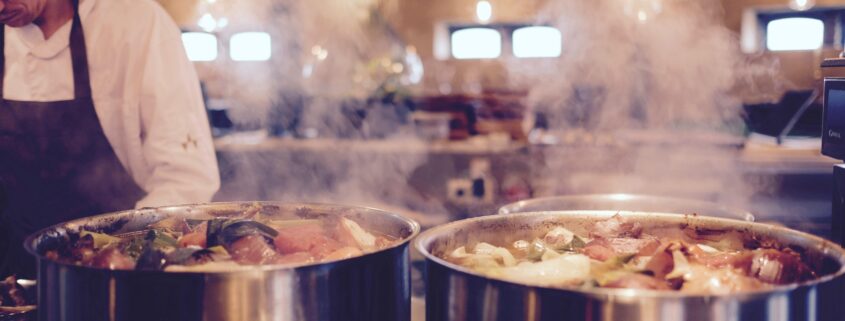Gas Safe Regulations for Commercial Kitchen Extraction
Commercial kitchens can be dangerous places, so it’s important to do all we can in order to reduce the risks. The correct ventilation is a requirement in a commercial kitchen, which means you have a duty to follow the correct procedures to ensure your commercial kitchen extraction is as safe as can be and poses a minimal fire risk.
The right design of ventilation and cooking equipment is important to protect the health of kitchen staff and everyone around them. This involves looking closely at the hazards of gas use and the by-products of cooking in a commercial kitchen environment. What are the Gas Safe Regulations for commercial kitchen extraction and how can you reduce the risks associated with gas use?
- Adequate ventilation and ductwork.
It’s a legal requirement to ensure your kitchen has an appropriate supply of air to reduce levels of carbon monoxide, which can be fatal if inhaled in high levels. Ensure your ductwork is sealed correctly for a good flow of air too.
- Train staff on the use of the appliances/equipment.
Staff should always be trained in how to use all appliances and equipment correctly and safely, and to spot the signs of carbon monoxide poisoning.
- Suitable interlocks with the gas supply
A gas interlock system helps prevent explosions that are normally caused by unburned gases. The installation of gas safety interlocks has been required by law since 2009 in order to meet Gas Safe Regulations in all new kitchens.
- Adequate maintenance, cleaning and servicing.
It’s a requirement that you ensure your commercial kitchen ventilation is cleaned regularly and that regular maintenance/service checks are carried out to make sure everything is working as it should and reduce the risk of fire.
- Flame supervision devices.
A FSD or flame failure device is essential for any gas appliance in the kitchen. It helps to prevent wastage and prevents hazards that flammable gas can cause by cutting the supply of gas if a flame is extinguished, ensuring it stays off until it is reignited.
- Installation of Carbon Monoxide alarms.
Carbon monoxide is a colourless, odorless, and tasteless flammable gas which can be fatal if inhaled in high amounts. Carbon monoxide alarms are an effective way of identifying this gas in the air and alerting you before it becomes dangerous. CO alarms should be installed in every room with a fuel-burning appliance with a one metre space from the appliance to the alarm at least, and five feet from the ground.
For the latest information about Gas Safe Regulations in commercial kitchens, check the gov.uk website.
Is your establishment gas safe?
It’s the duty of every employer to ensure any gas appliance is maintained to prevent risk of injury to any person. Ensure your appliances are running safely and efficiently with regular gas safety checks. Here at Swift Maintenance, our Gas Safe registered engineers are approved installers and comply with the latest regulations. For more information and advice about our services, give us a call today: 0121 505 4001.



